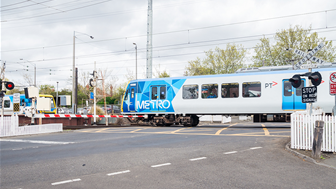Consumer robotics company Sphero has released the latest version of its rolling robot that is equipped with IoT technologies to encourage STEAM (Science, Technology, Engineering, Arts, Mathematics) learning in children.
Dubbed the SPRK+ (Students, Parents, Robots, Kids), this app-driven robot is designed with fun and education in mind.
In particular, the SPRK+ provides students with early exposure to basic coding principles, giving them a head start in the discipline and helping to foster the next generation of software developers needed for the growing IoT industry.
The SPRK+ is equipped with a range of sensors that allow it to determine its relative location, heading, speed, temperature and vertical acceleration, and a speaker than can generate sounds based on certain actions such as collision with objects. Inside, the SPRK+ has an inertial measurement unit (IMU) containing a gyroscope and accelerometer.
Power through programming
The device is designed to be paired with a smartphone or tablet with the ‘Lightning Lab’ app installed. The app not only allows manual control of the device’s movement and LED colour scheme, but also for the SPRK+ to be programmed to perform a range of movements and actions.
Programming is achieved using modular code blocks on Sphero’s proprietary Oval code platform. Based on the C++ language, this exposes students to basic programming principles, through the creation of their own programs, or by executing one of the 150-plus programs included in the app.
These apps have been developed by students and teachers around the world, and cover a range of functions, from simple movement and if-then-else programs, to more complex programs such as solar system simulation and maze navigation.
Teachers are also able to access the apps used by each of their students to track their progress and to develop a curriculum based on the programs available.
The SPRK+ has a waterproof and scratch-resistant polycarbonate shell. Pairing occurs via Bluetooth SMART, which enables tap-to-connect, and has an effective range of 30 metres between the SPRK+ and the smartphone. Charging the device is done by placing the robot in a specially designed cradle with induction charging technology.
Converting technology usage into proficiency
Devices like the SPRK+ are important to help to convert the high technology usage of today’s youth into technology proficiency, according to Kelly Tagalan, general manager of Code Club Australia – a national network of free, volunteer-led, after-school coding clubs for children aged 9–11.
“When we invite and help kids to become fluent in technology, it allows them to play, create and also advocate for themselves,” Tagalan said.
She said that a child’s brain activity when they’re learning a spoken language is identical to that when they are learning a programming language. Learning programming at a young age introduces students to the concept of computational thinking.
“Computational thinking is about breaking down complex ideas into smaller, more digestible pieces,” she explained.
“When we teach kids computational thinking, we’re teaching them to solve problems that may not have an answer yet, or may have many different answers.”
Tagalan said that this type of learning encourages children to develop skills to solve complex issues, such as cures for major diseases.
“When you get kids to do something like computational thinking with a tool like the SPRK+, you’re teaching them those principles without them knowing it.”






